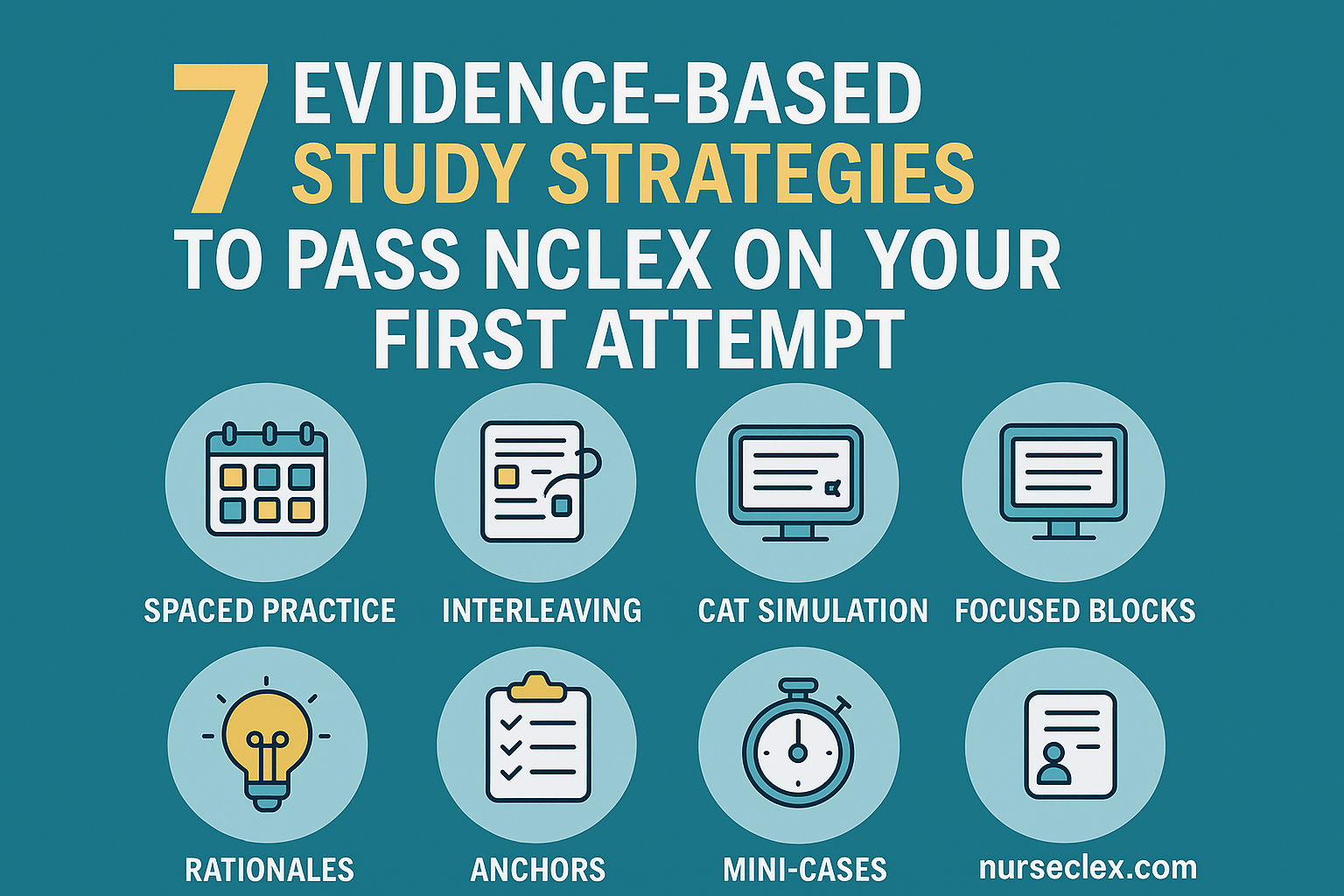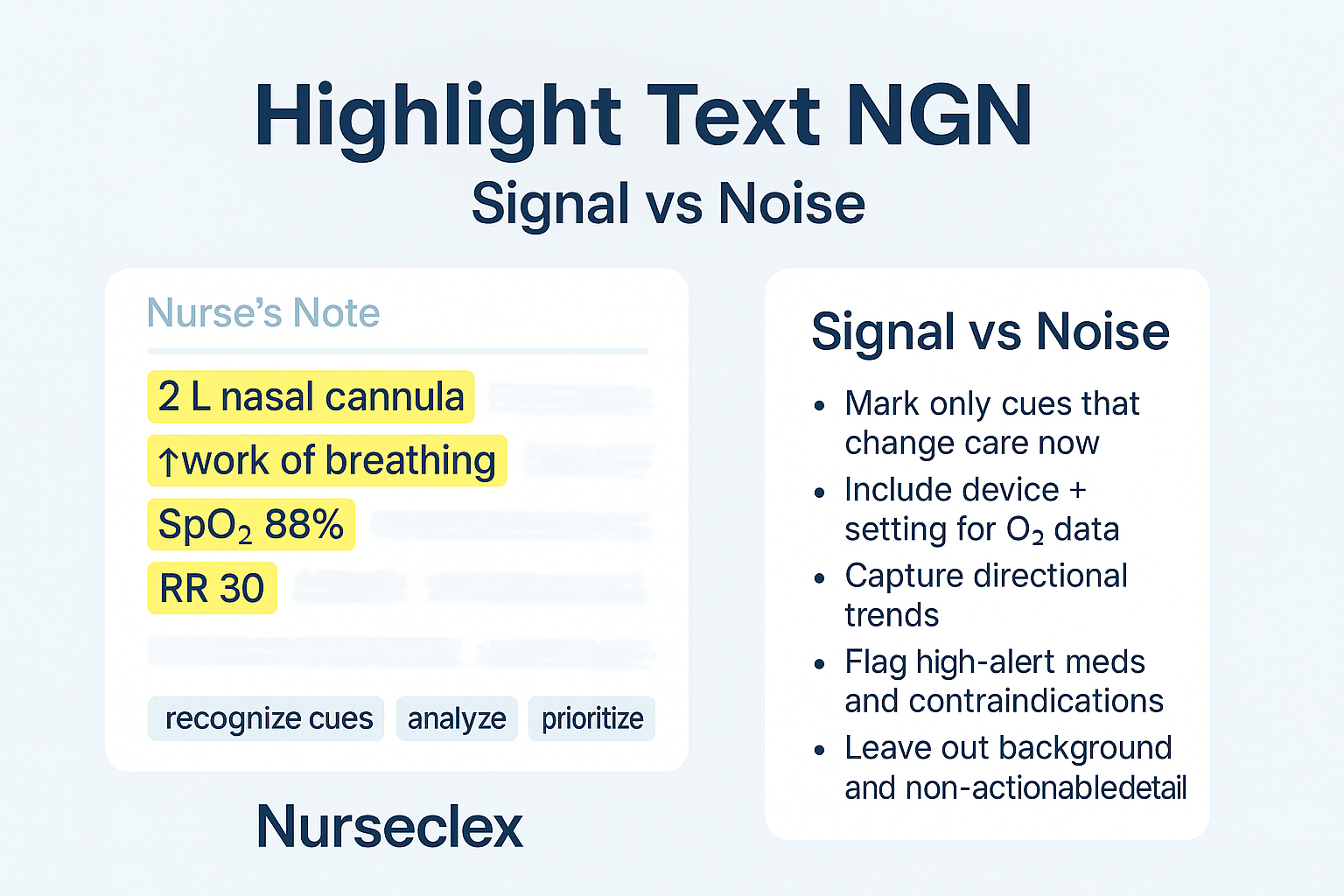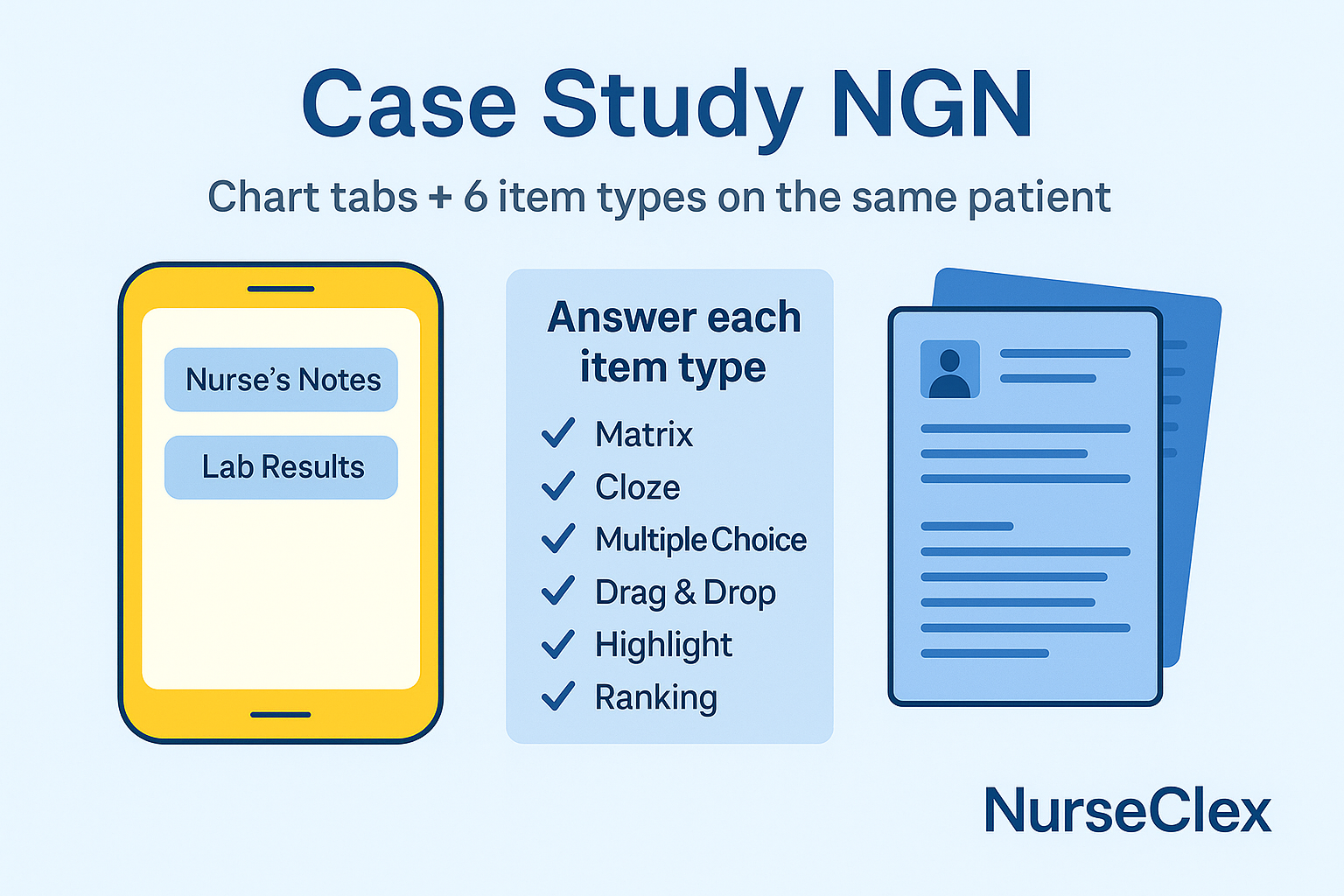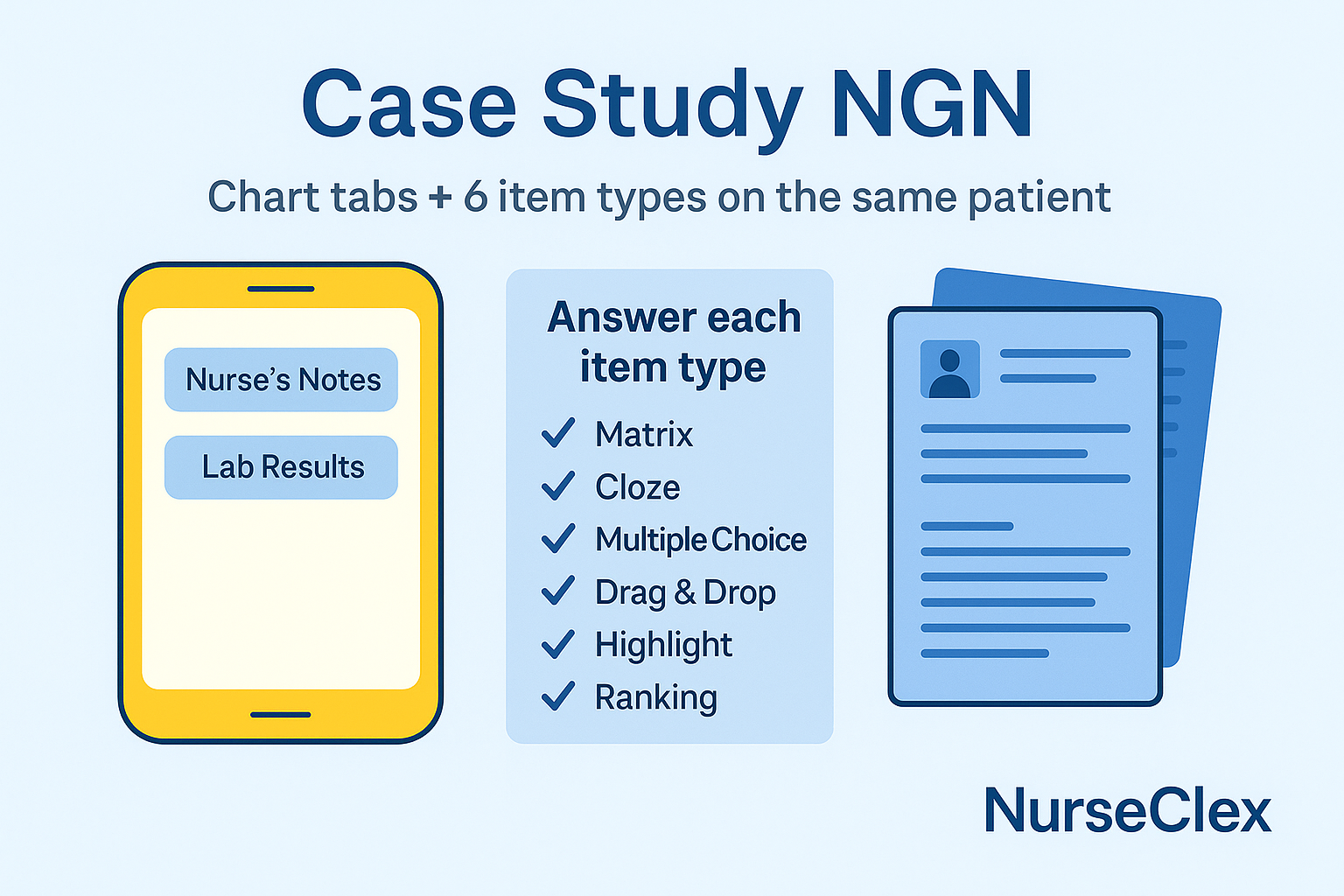One-sentence definition (featured snippet)
Bow-tie items ask you to enter three things: the problem, the safest first actions, and the monitoring that proves the actions worked and stayed safe.
Need the priority rules? Read Analysis & Prioritization. For scoring tips, see NGN Partial Credit.
The 3 panes in bow-tie items (what to enter)
-
Problem/Condition
Name the best-fit diagnosis or the priority problem shown by the cues. -
Actions/Interventions (2–3)
Choose the safest first steps that treat the current threat.
Use the stack: ABCs → Safety → Stability → Time-sensitive. -
Parameters/Monitoring
List what you will check to confirm effect and catch adverse events.
Why bow-tie items are high-yield
-
The layout guides your thinking: Problem → Actions → Monitoring.
-
You earn credit for correct parts, even if you miss another pane on some items.
-
Bow-tie items reward safety first and tight cause-effect linking.
Worked examples you can copy
Case 1: Hyperkalemia on dialysis
-
Problem: Hyperkalemia (K⁺ 6.5) with peaked T waves.
-
Safest actions (2–3):
-
Place on cardiac monitor.
-
Prepare calcium gluconate.
-
Give insulin + dextrose if ordered.
-
-
Monitoring: EKG changes, K⁺ trend, glucose checks.
Why this scores: Hyperkalemia threatens perfusion/arrhythmia. Stabilize the heart, then shift potassium. Monitoring matches the actions’ effect and risk.
Case 2: Preeclampsia with severe features
-
Problem: Severe preeclampsia (BP 170/110, RUQ pain, severe HA, proteinuria).
-
Safest actions (2–3):
-
Start magnesium sulfate per protocol.
-
Give antihypertensive per protocol.
-
Seizure precautions (airway equipment available).
-
-
Monitoring: DTRs, respiratory rate, urine output, serum Mg.
Why this scores: Risk is seizure and airway compromise. You protect neuro and perfusion first, then monitor for Mg toxicity and urine output.
Fast template (paste and fill)
-
Problem: Best-fit diagnosis or priority problem
-
Safest actions (2–3): Immediate, within-scope steps using ABCs/Safety/Stability/Time
-
Monitoring: Measures that confirm effect and detect adverse events
Safety checklist (30 seconds)
-
One clear problem named
-
Safest first actions (no teaching before stabilization)
-
Monitoring matches each action’s effect and risk
-
All choices are within scope (RN vs LPN vs UAP)
Common traps (and fixes)
-
Too many actions → noise and lower credit.
-
Fix: Pick the top 2–3 that change outcomes now.
-
-
Teaching before stabilization.
-
Fix: Stabilize first; teach later.
-
-
Mismatched monitoring.
-
Fix: Tie each action to a specific parameter (e.g., MgSO₄ → RR/DTRs/Mg level).
-
Image (hero)
File: hero-bow-tie-items.jpg
Alt: “Bow-tie pathway: problem in center; actions on one side; monitoring on the other for bow-tie items”
Internal links (keep readers moving)
FAQs
Do all bow-tie items require monitoring?
Yes. Monitoring proves the action worked and stayed safe.
What if two actions both look correct?
Choose the option that protects airway, perfusion, or neuro first, and is least invasive.
How many actions should I enter?
Usually 2–3 safest first actions that address the current threat. More than three adds noise.







